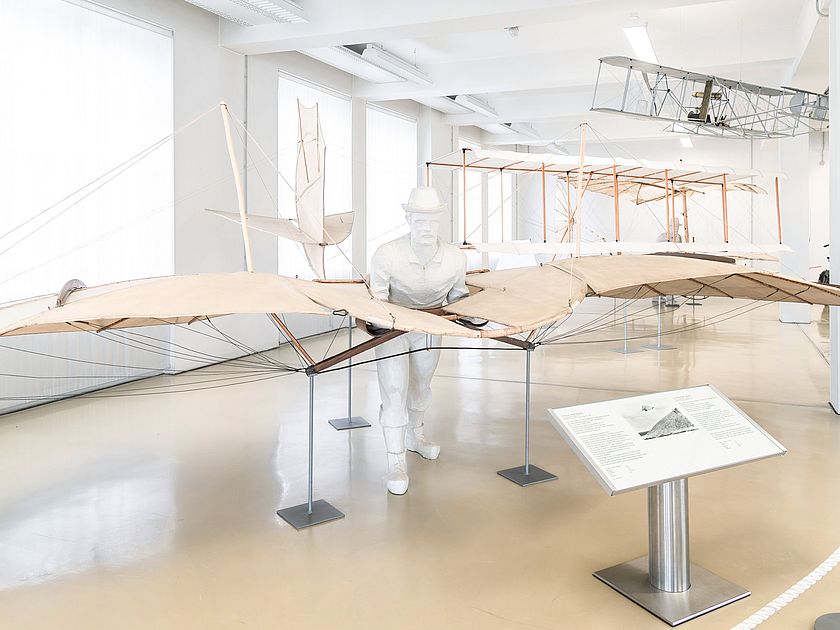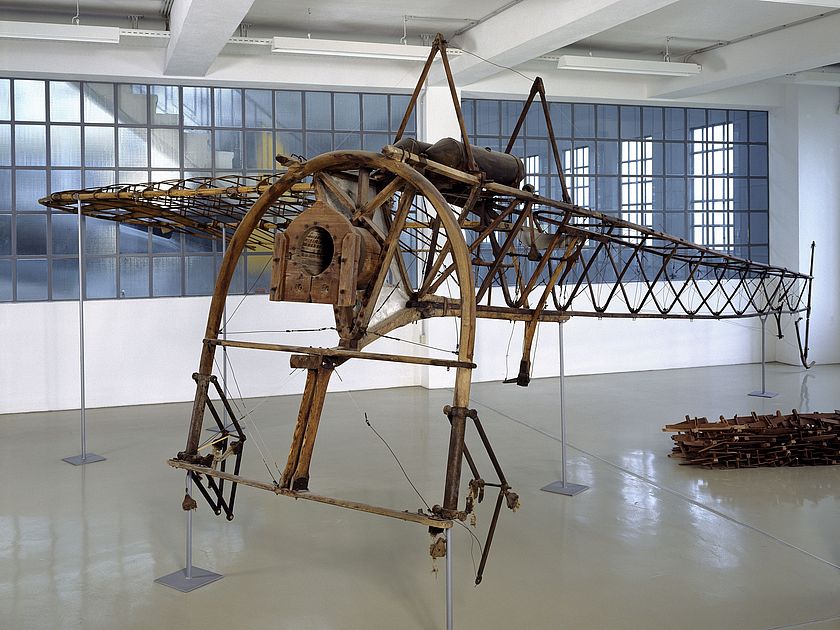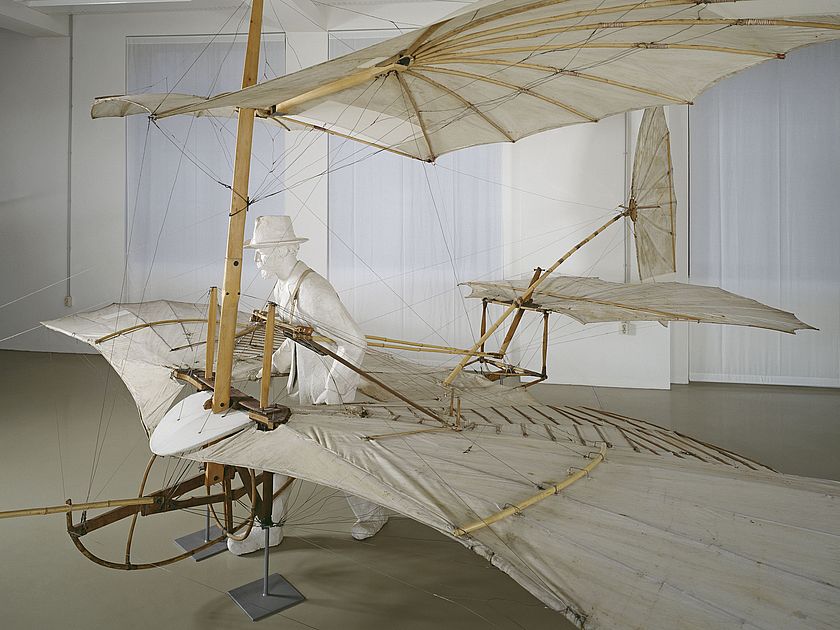
Photo: Deutsches Museum
Early Aviation
Unique originals from the pioneering days of aviation are on display in the Flugwerft, including both Wolfmüller’s and Vollmoeller’s flying machines and a faithful replica of Otto Lilienthal’s glider.
Manned aviation began in 1783, when the Montgolfier brothers and the physicist Jacques Charles developed the first successful balloons in quick succession. Such balloons, which were at the mercy of the wind and could not be steered, would later grow in significance, primarily as sports equipment. In addition to the balloon basket of the gas balloon D-ALB, several other items of equipment are on display. At the end of the 19th century, Otto Lilienthal had laid down the foundations for the design of aircraft as a result of his aerodynamic studies and successful gliding flights. The Flugwerft has a detailed replica of his Normal-Segelapparatfrom 1894, allowing visitors to study the glider up close. Almost a decade after Lilienthal, the Wright brothers achieved the first flight in a powered aircraft in 1903. A large model built as far back as 1909 illustrates the typical design of the Wright brothers’ aircraft. Resourceful designers and aviators everywhere made every attempt to learn from these models. In Southern Germany Alois Wolfmüller and the Karl und Hans Vollmoeller brothers, among others, tried their hand at building various gliders and powered aircraft.



